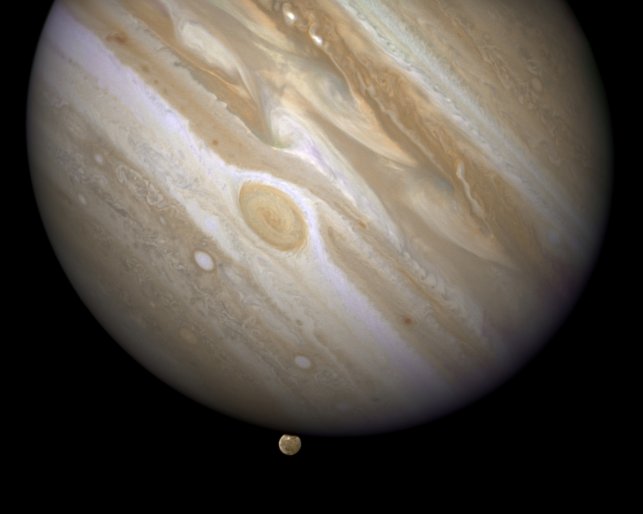
If you are an astronomy enthusiast or simply a star gazer, you should not miss looking at Jupiter this week. The biggest planet in the Solar system will be closest to the Earth on 7 April (Friday), when it comes to opposition, which means it's opposite the sun. The planet will appear as a bright star in the constellation Leo all night long. However, you can get the best view when it rises 6° eastern horizon till reaches its highest point in the sky, 67° above your southern horizon. "The best time to observe is when it's highest in the sky which is close to midnight local time," AccuWeather Meteorologist Dave Samuhel said.
However, you can get the best view when it rises 6° eastern horizon till reaches its highest point in the sky, 67° above your southern horizon. "The best time to observe is when it's highest in the sky which is close to midnight local time," AccuWeather Meteorologist Dave Samuhel said.
Though the planet will appear bright and very close to Earth, it is still 414 millions of miles away, reported refinery29.com. So if you don't want to miss this opportunity, you better be ready with your binoculars. As of 6 April, Jupiter rose in Singapore at 19:14 pm at an altitude of 96° E, reached meridian at 1:14 am and set 7:15 am at 264° W, according to timeanddate.com.
According to experts, no special equipment will be needed to see Jupiter, but if you have a telescope or binoculars you will sure have a visual treat. "With a simple pair of binoculars, you can spot three or four of Jupiter's largest moons," Samuhel added. But, if you have a decent telescope, you may be able to see the red cloud bands on the gigantic planet.
However, even if someone misses this celestial show tomorrow, don't loose heart as Jupiter will remain visible in the night sky for the next couple of months. However, with each passing day (from 7 April), it will gradually become dimmer and set earlier in the night.









